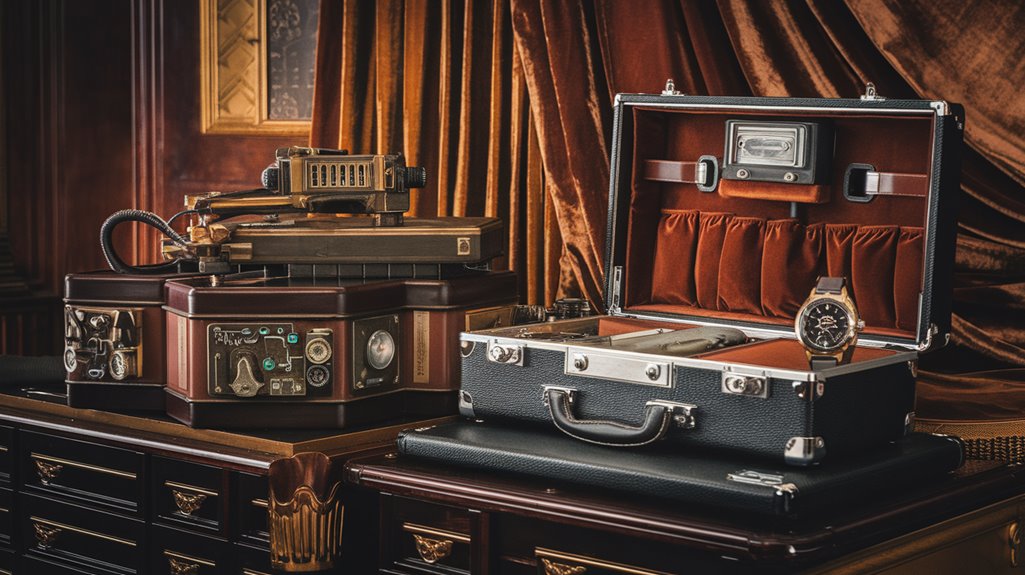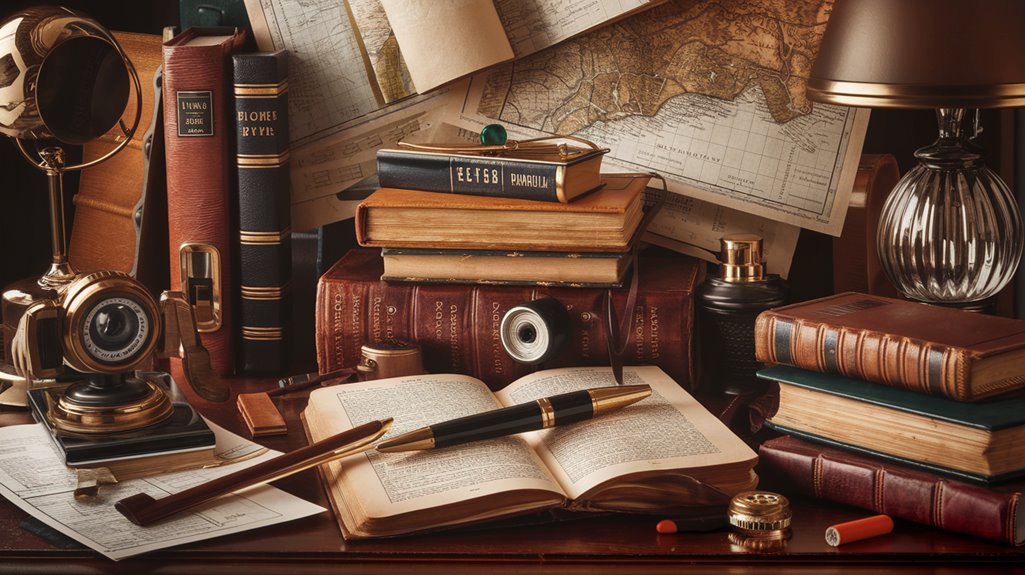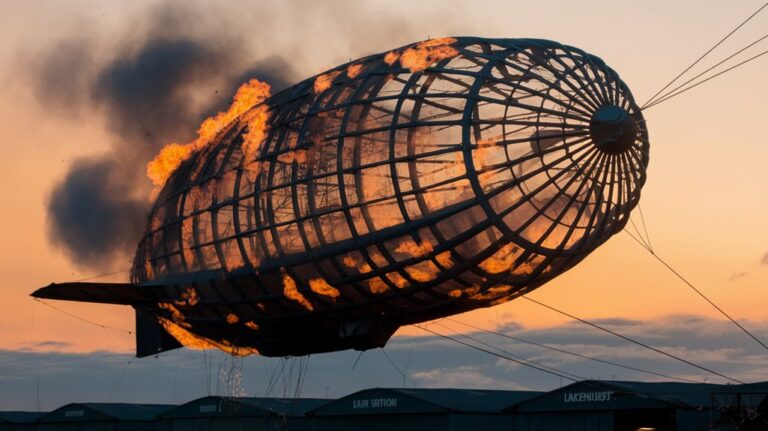The Bond Gadgets That Were Shockingly Real in the Cold War
You've probably dismissed James Bond's gadgets as pure Hollywood fantasy, but you'd be surprised to learn how many of them actually existed during the Cold War. The CIA didn't just admire Q's inventions—they actively worked to bring them to life. From deadly lipstick tubes to camera-equipped watches, these weren't just props in a spy movie. The real story behind these classified tools reveals an arms race that blurred the lines between fiction and reality.
From Fiction to Reality: The CIA's Bond-Inspired Arsenal
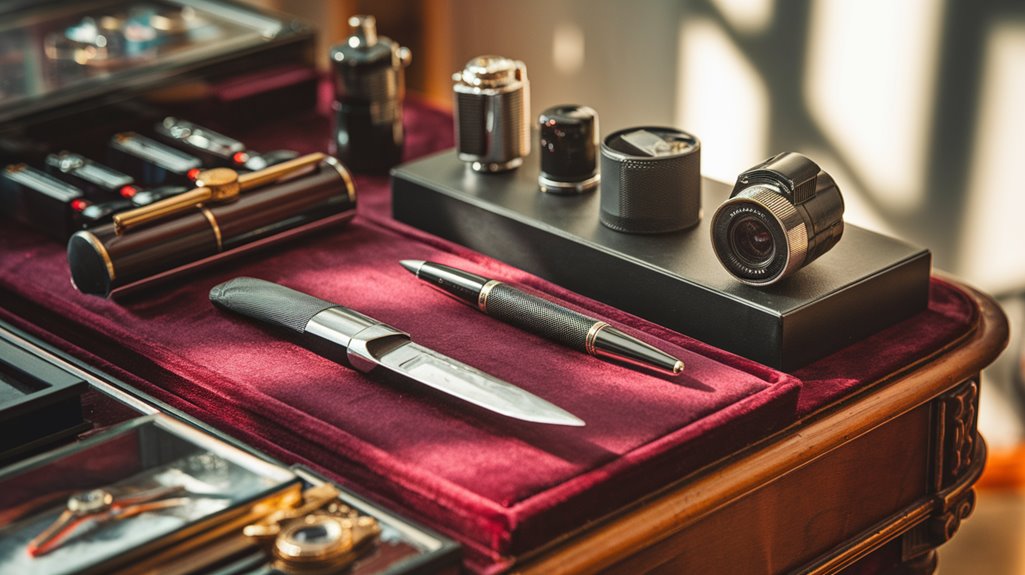
While most people associate James Bond's gadgets with pure fiction, declassified evidence reveals a surprising reality: the CIA actively sought to replicate 007's innovative tools.
The gadget evolution between fiction and reality was more intertwined than you'd imagine. Through a fascinating relationship between CIA director Allen Dulles and Bond author Ian Fleming, espionage innovations flowed both ways. The modified digital Seiko watch proved especially valuable for photographing classified documents in KGB buildings. The character's enduring influence on espionage reflects his status as a Cold War icon.
The CIA's technical staff didn't just admire Bond's gadgets – they worked to bring them to life. You'll find evidence in their T-100 camera development, which they cleverly concealed in everyday items like Seiko watches, keychains, and lighters.
Perhaps most significantly, they even attempted to recreate the poison-tipped dagger shoe from "From Russia With Love." The CIA's Office of Technical Services embraced its role as "America's Q," developing real-world tools that would make Bond proud.
Deadly Fashion: Hidden Weapons in Plain Sight
Among the CIA's most ingenious developments were weapons disguised as everyday fashion accessories and personal items.
You'd never suspect that an elegant lipstick tube could conceal a covert firearm, or that a sophisticated pocket watch might house a tiny pistol. The agency transformed common fashion items into deadly tools, with hidden blades tucked into combs and shoes, while belt buckles concealed miniature guns. The Hand Cannon pistol became one of their most devastating concealed weapons during operations.
Like the extreme weapons race of the era, these spy gadgets reflected the mutually assured destruction mindset that defined Cold War tactics.
Even the most innocent-looking accessories weren't what they seemed.
Cufflinks could deliver lethal poisons, while fashionable hairpins doubled as tiny pistols. Women's jewelry often contained surveillance equipment, with button cameras capturing intelligence while maintaining perfect cover.
These ingenious disguises allowed agents to carry weapons and spy gear without detection, proving that the deadliest arsenal could be hiding in plain sight.
The Secret World of Surveillance Tech
How did the US maintain its edge during the Cold War? Through a sophisticated web of surveillance technology that would make James Bond envious.
At sea, SOSUS and IUSS underwater surveillance systems tracked Soviet submarines using advanced sound wave detection, severely limiting the USSR's ability to launch stealth attacks.
You'd find equally impressive tech on land, where engineers battled covert listening devices planted in US embassies. The spycraft efforts often created a false sense of security through what experts called security theater.
Using specialized equipment like magnetic microphones and spectrum analyzers, they hunted down hidden bugs and radio transmitters.
Meanwhile, high above, American spy satellites captured essential intelligence with powerful cameras, photographing every new Soviet missile silo and weapons development. These satellites used light-sensitive film to capture detailed images that were later retrieved in special capsules.
This network of surveillance tech proved invaluable in verifying arms control agreements and keeping tabs on potential threats throughout the Cold War.
Masters of Deception: Disguise Tools and Techniques
Three key elements defined Cold War espionage: stealth, secrecy, and deception. Nothing exemplified this more than the disguise evolution that transformed spies into masters of camouflage.
You'd be amazed at the ingenious tools they developed, from SAM masks that allowed lightning-fast identity changes to breakaway disguises that could vanish in seconds. The innovative five second mask could be quickly removed and hidden under the armpit when needed.
The espionage psychology behind these tools was remarkable. Spies didn't just rely on wigs and fake mustaches – they created sophisticated systems like the Line Doggo Operation, where even pets became part of their cover. They concealed high-tech tools in everyday clothing items, as seen in the KGB's camera-equipped blazer.
In life-or-death situations, they'd use extreme measures, including rectal tool kits and false body parts for concealment. These weren't just movie props; they were real tools that often meant the difference between success and capture in the high-stakes world of Cold War intelligence.
Shared Gadgets: How MI6 and CIA Collaborated on Spy Tech
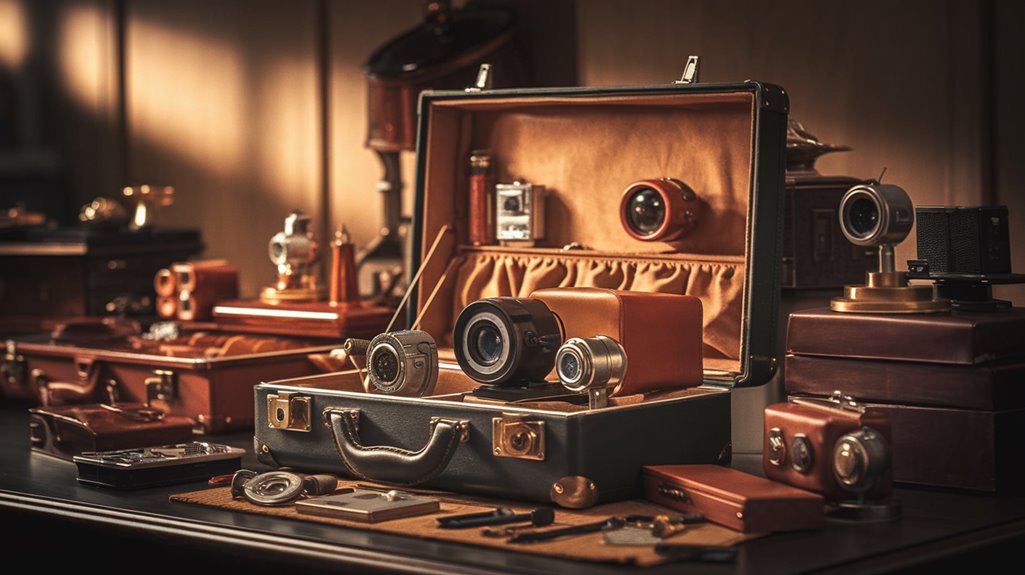
While many think of James Bond's gadgets as pure fiction, the real-world collaboration between MI6 and the CIA during the Cold War produced equally fascinating spy tech.
Under the UKUSA Agreement, these agencies shared intelligence and spy technology, from sophisticated eavesdropping operations to concealed cameras in everyday items. CIA director Allen Dulles was particularly enthusiastic about turning Bond's fictional devices into reality after his meetings with Fleming.
Key examples of intelligence collaboration included:
- Operation Gold, where both agencies built a secret tunnel to tap Soviet communications in Berlin
- The development of "active concealment" tools, like dead drop spikes and briefcase cameras
- The adaptation of James Bond-inspired devices, including the infamous poison-tipped dagger shoe
- The widespread use of the Minox C Camera for covert document photography
This partnership didn't just enhance espionage capabilities—it helped shape public perception of intelligence agencies through the enduring influence of Ian Fleming's work.
During Operation Gold, the agencies recorded an astounding 67,000 hours of Soviet communications, demonstrating the massive scale of their joint surveillance efforts.

